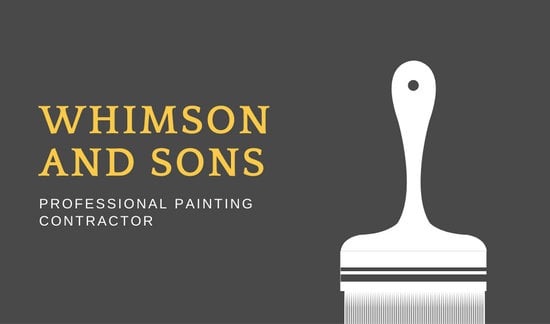Discover How Seasonal Impacts Can Impact The Effectiveness Of Industrial Outside Paint And Find Out The Most Positive Times To Ensure Durable Outcomes For Your Job
Discover How Seasonal Impacts Can Impact The Effectiveness Of Industrial Outside Paint And Find Out The Most Positive Times To Ensure Durable Outcomes For Your Job
Blog Article
Content Author-Regan Decker
When you're planning an industrial external painting task, seasonal elements can make or damage your outcomes. You'll wish to take into consideration how temperature level and moisture impact paint application and drying out times. Selecting the appropriate season can guarantee your paint adheres effectively and lasts much longer. But which Related Site are genuinely the most effective for this sort of work? Allow's explore the crucial elements that can impact your project's success.
The Effect of Temperature on Paint Application
When you're preparing a commercial exterior paint task, the temperature can significantly impact exactly how well the paint adheres and dries.
Ideally, you intend to paint when temperatures range between 50 ° F and 85 ° F. If it's as well chilly, the paint might not cure properly, causing concerns like peeling or cracking.
On the other side, if it's also hot, the paint can dry also rapidly, stopping correct bond and leading to an irregular surface.
You need to also take into consideration the time of day; early morning or late afternoon uses cooler temperatures, which can be extra favorable.
Constantly check check out here for the specific paint you're making use of, as they often give support on the suitable temperature array for ideal outcomes.
Moisture and Its Result on Drying Times
Temperature level isn't the only ecological variable that affects your industrial outside painting project; humidity plays a substantial role as well. High humidity degrees can decrease drying out times dramatically, influencing the total quality of your paint work.
When the air is filled with dampness, the paint takes longer to heal, which can result in concerns like bad attachment and a greater risk of mold development. If you're painting on an especially damp day, be prepared for prolonged delay times in between coats.
It's critical to keep an eye on neighborhood weather and plan appropriately. Ideally, go for moisture levels between 40% and 70% for optimum drying.
Keeping these consider mind ensures your project remains on track and supplies an enduring surface.
Best Seasons for Commercial Outside Paint Projects
What's the best time of year for your industrial exterior painting jobs?
Springtime and early autumn are generally your best choices. During hills painting , temperatures are light, and moisture levels are often reduced, producing optimal problems for paint application and drying.
Avoid exterior painting toronto , which can cause paint to dry too rapidly, causing bad attachment and coating. Similarly, winter months's cold temperatures can hinder appropriate drying and healing, running the risk of the long life of your paint job.
Go for days with temperatures between 50 ° F and 85 ° F for ideal outcomes. Bear in mind to check the local weather prediction for rainfall, as wet problems can destroy your project.
Preparation around these variables ensures your painting task runs smoothly and lasts longer.
Conclusion
In conclusion, planning your commercial exterior paint jobs around seasonal considerations can make a considerable distinction in the outcome. By organizing work during the ideal temperature levels and humidity degrees, you'll ensure much better attachment and drying times. Keep in mind to keep an eye on local weather forecasts and pick the right time of year-- springtime and very early loss are your best bets. Taking these steps will certainly aid you achieve a durable and professional surface that lasts.
